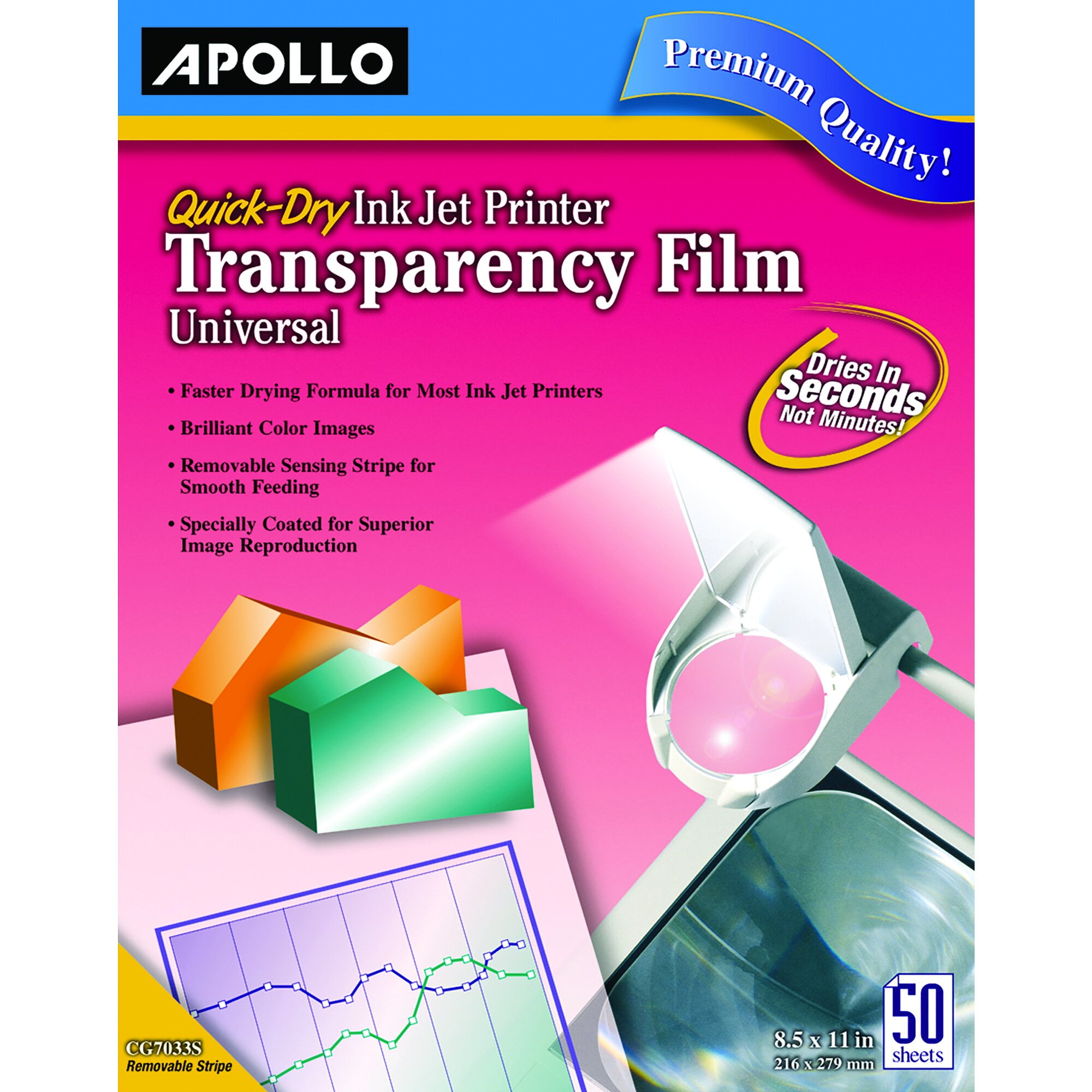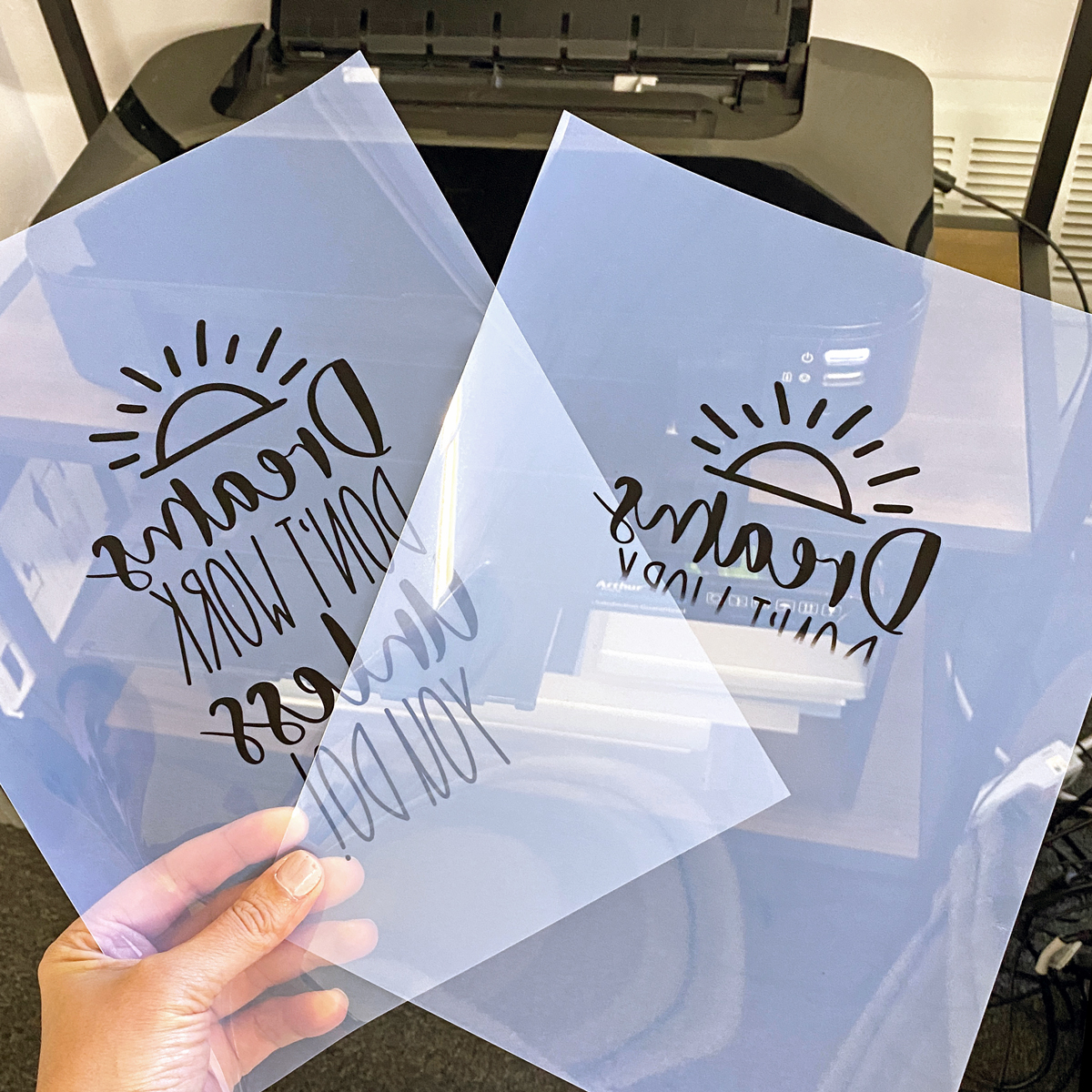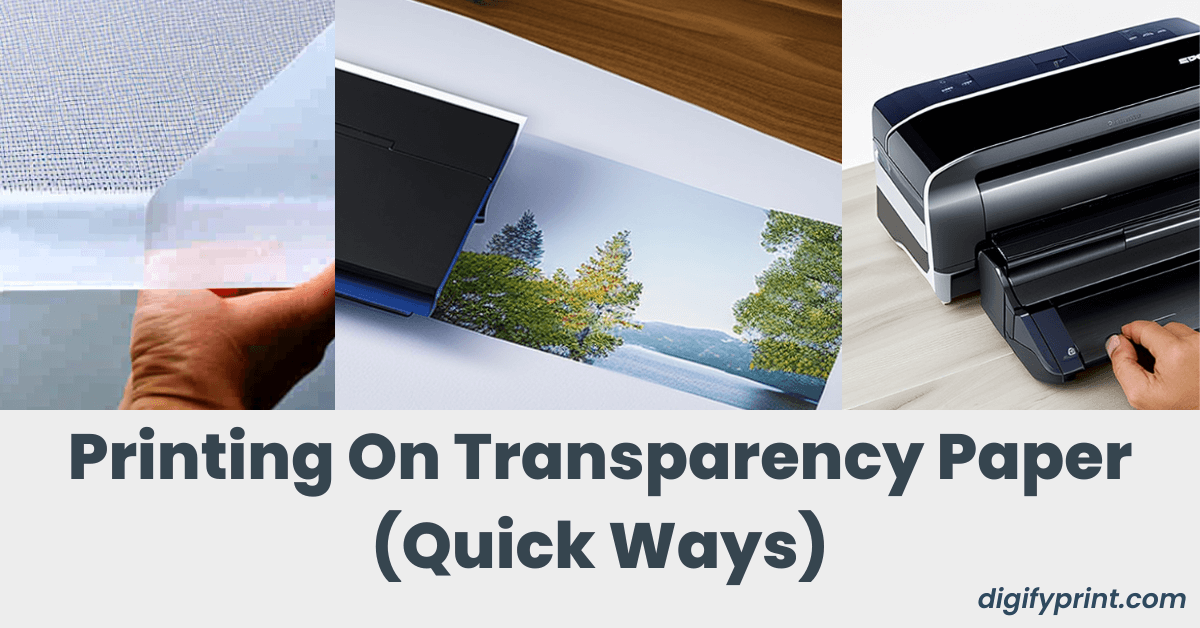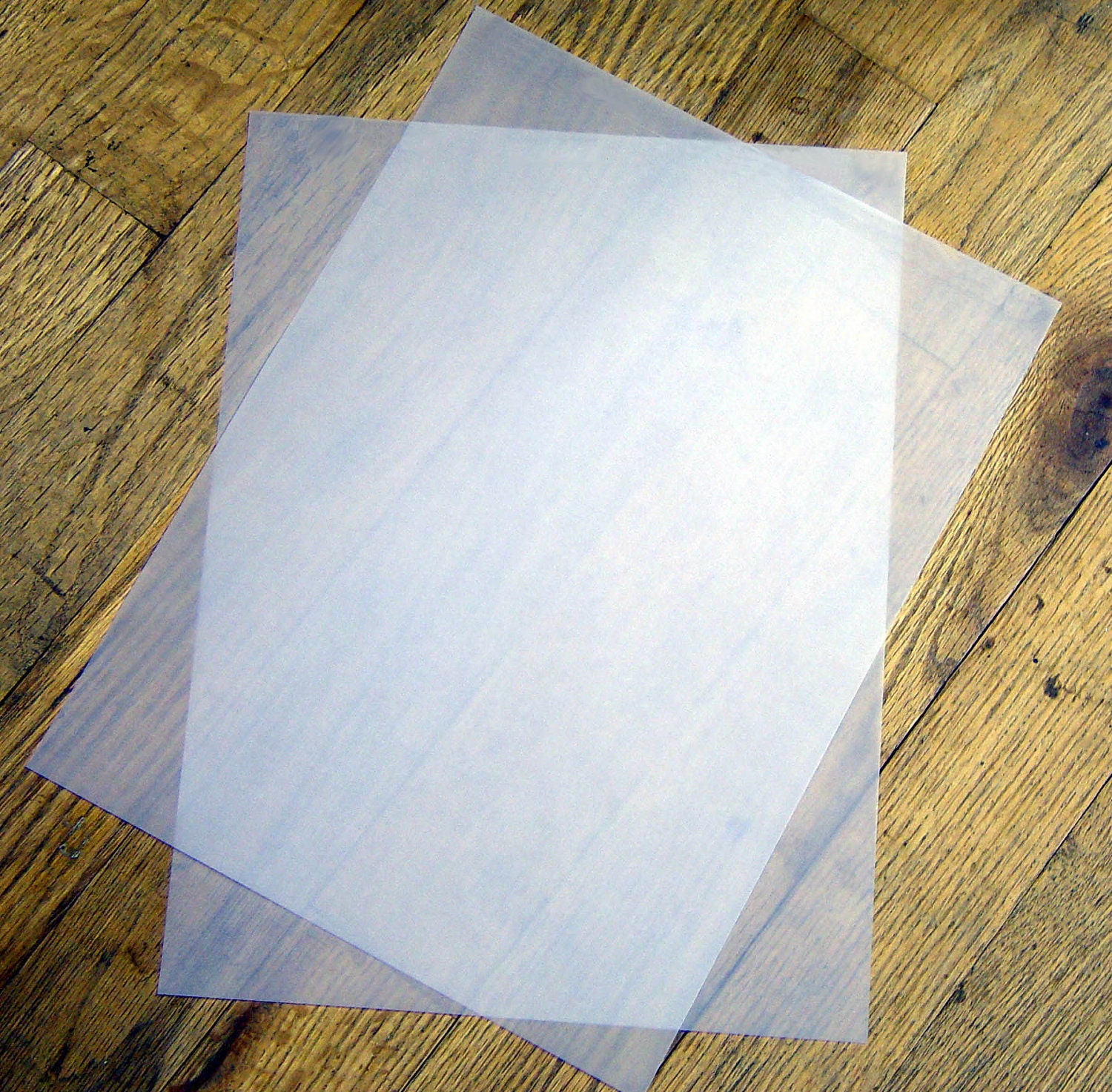How to print on transparency paper – Printing on transparency paper presents unique challenges and rewards, and this guide delves into the intricacies of this specialized printing technique. Whether you’re a seasoned pro or just starting out, this comprehensive resource will equip you with the knowledge and skills to produce stunning, professional-quality transparencies.
From selecting the right paper and printer to troubleshooting common issues, we’ll cover every aspect of the process. Along the way, you’ll learn advanced techniques and discover how to use transparency paper for various applications, including presentations, photography, and crafts.
Introduction

Transparency paper is a specialized type of paper that allows light to pass through it, making it ideal for various applications. It is commonly used in the printing industry for creating overlays, projections, and other visual effects.
There are several types of transparency paper available, each with unique properties and applications.
Types of Transparency Paper
1. Acetate Transparency Paper: Made from cellulose acetate, this paper is clear, durable, and water-resistant. It is commonly used for overhead projectors and creating presentation slides.
2. Polyester Transparency Paper: Also known as Mylar, this paper is made from polyethylene terephthalate. It is stronger and more tear-resistant than acetate paper and is often used for architectural drawings, blueprints, and engineering applications.
3. Vellum Transparency Paper: Made from a blend of cotton and linen fibers, this paper has a translucent, parchment-like appearance. It is commonly used for artistic purposes, such as drawing, painting, and calligraphy.
– Discuss the different types of transparency paper available and their suitability for different printing methods.
Transparency paper is a specialized type of paper that allows light to pass through it, making it ideal for creating slides, overlays, and other applications where transparency is desired. There are several types of transparency paper available, each with its own unique properties and suitability for different printing methods.
The most common type of transparency paper is acetate, which is made from a cellulose acetate base. Acetate is a durable and relatively inexpensive material that is well-suited for use with inkjet and laser printers. However, acetate can be prone to yellowing over time, especially when exposed to heat or UV light.
Another type of transparency paper is polyester, which is made from a polyethylene terephthalate (PET) base. Polyester is more durable than acetate and is less prone to yellowing. It is also more resistant to heat and UV light, making it a good choice for applications where durability is important.
A third type of transparency paper is RC (resin-coated) paper, which is made from a paper base that has been coated with a resin. RC paper is more durable than acetate or polyester, and it is also less prone to yellowing.
However, RC paper can be more expensive than other types of transparency paper.
The type of transparency paper that is best for a particular application will depend on the desired results and the printing method that will be used.
To print on transparency paper, begin by ensuring your printer supports the material. Then, adjust your printer settings accordingly. For printing specific portions of a document, you can refer to our guide on how to print selected cells in excel.
Once the selected cells are printed, return to your transparency printing task. Adjust the paper orientation and margins as needed, and preview the document before printing to ensure accuracy.
Inkjet Printers
Inkjet printers are a good choice for printing on transparency paper because they produce high-quality images with vibrant colors. However, it is important to use inkjet transparency paper that is specifically designed for use with inkjet printers. This type of paper has a special coating that helps the ink to adhere to the surface of the paper.
Transparency paper is a unique printing medium that allows light to pass through it, creating eye-catching effects. To print on transparency paper, you’ll need a specialized printer and ink that is compatible with the paper. Once you have the necessary equipment, you can create stunning prints that can be used for presentations, overlays, and other projects.
Interestingly, the versatility of 3D printing extends beyond traditional manufacturing; you can make money with a 3D printer by creating and selling custom products, prototypes, or even offering 3D printing services. Returning to transparency paper printing, it’s important to note that the paper is delicate and requires careful handling to avoid smudging or tearing.
Laser Printers
Laser printers can also be used to print on transparency paper, but it is important to use laser transparency paper that is specifically designed for use with laser printers. This type of paper has a special coating that helps the toner to adhere to the surface of the paper.
– Explain how to prepare transparency paper for printing, including the necessary materials and steps.
Preparing transparency paper for printing requires specific materials and careful handling to ensure optimal results and prevent damage. Understanding the proper techniques and precautions is crucial for successful printing on this delicate material.
Necessary Materials:
- Transparency paper compatible with the printer
- Printer with transparency printing capabilities
- Soft, lint-free cloth or gloves
- Paper tray or envelope feeder (if not using a dedicated transparency tray)
Steps:
- Select Compatible Transparency Paper:Choose transparency paper specifically designed for your printer model and printing method. Inkjet and laser printers require different types of transparency film.
- Handle with Care:Transparency paper is prone to smudging and scratches. Wear gloves or handle it by the edges using a soft, lint-free cloth to avoid leaving fingerprints or marks.
- Load into Printer:Place the transparency paper in the designated transparency tray or envelope feeder, ensuring it is facing the correct direction for printing.
- Printer Settings:Adjust the printer settings to match the type of transparency paper being used. Select the appropriate paper type and adjust the print quality settings for optimal results.
Key Steps in Preparing Transparency Paper for Printing
| Step | Description |
|---|---|
| Material Selection | Choose transparency paper compatible with the printer and printing method. |
| Handling | Handle paper carefully using gloves or a soft cloth to avoid smudging or scratches. |
| Loading | Place transparency paper in the designated tray or feeder, facing the correct direction. |
| Printer Settings | Adjust printer settings to match the transparency paper type and print quality requirements. |
Common Mistakes to Avoid
- Using incompatible transparency paper for the printer
- Touching the printable surface with bare hands
- Folding or creasing the paper
- Loading the paper incorrectly into the printer
- Using incorrect printer settings
Troubleshooting Guide
Problem:Smudges or streaks on the printed transparency
Solution:
- Ensure gloves or a soft cloth were used when handling the paper.
- Check if the transparency paper is compatible with the printer and printing method.
Problem:Paper jams during printing
Solution:
- Verify that the transparency paper is loaded correctly into the designated tray.
- Check if the paper is folded or creased.
Problem:Printed image is faint or faded
Solution:
- Adjust the printer settings to increase the print density or quality.
- Ensure the printer is using the correct ink or toner for transparency paper.
Setting Up the Printer

To set up your printer for transparency paper, follow these steps:
1. Load the transparency paper into the printer’s paper tray. Make sure the paper is facing the correct direction, as indicated by the printer’s manual.
2. Select the “Transparency” or “Film” setting in the printer’s driver. This setting will adjust the printer’s settings to optimize the print quality for transparency paper.
3. Adjust the print quality settings to “High” or “Best” to ensure the best possible print quality.
4. Click “OK” or “Print” to start printing.
Printer Settings for Different Transparency Paper Types
Different types of transparency paper may require different printer settings. Here is a table summarizing the recommended settings for different types of transparency paper:
| Transparency Paper Type | Printer Setting |
|---|---|
| Inkjet Transparency Paper | Transparency, High Quality |
| Laser Transparency Paper | Film, Best Quality |
| Overhead Projector Transparency Paper | Transparency, High Quality |
Printing the Image

Once the transparency paper is properly set up in the printer, you can begin the printing process. Before printing, select the appropriate print mode based on the desired output quality and effects.
Standard Mode:This mode provides a basic print quality suitable for most general printing needs. It uses a single pass of the print head to apply ink to the paper, resulting in a print that is typically less vibrant and detailed than other modes.
High-Quality Mode:This mode produces prints with higher resolution and more vibrant colors. It uses multiple passes of the print head to apply ink to the paper, resulting in a print that is more detailed and accurate to the original image.
Photo Mode:This mode is specifically designed for printing photographs and provides the highest print quality. It uses multiple passes of the print head and specialized ink droplets to create a print that is highly detailed and color-accurate.
Drying and Handling the Transparency
Allowing the Ink to Dry Completely
After printing, it is crucial to allow the transparency to dry completely before handling. This step prevents smudging and ensures the ink adheres properly to the surface. Drying times vary depending on the type of ink and printer used.
Air Drying
For air drying, place the transparency on a flat surface and allow it to dry for at least 24 hours. Avoid placing the transparency in direct sunlight or near heat sources, as this can cause the ink to dry unevenly or fade.
Heat Setting
If using a heat setting, follow the manufacturer’s instructions carefully. Excessive heat can damage the transparency or cause the ink to bleed.
Handling and Storage
When handling the transparency, hold it by the edges to avoid smudging the printed area. Store the transparency in a cool, dry place away from direct sunlight and extreme temperatures. This will help prevent the ink from fading or becoming damaged.
Troubleshooting Common Problems

When printing on transparency paper, several common problems can occur, including smudging, fading, or incorrect colors. Understanding the causes of these problems and their solutions can help ensure successful printing results.
A table summarizing the common problems, their causes, and the corresponding solutions is provided below:
| Problem | Cause | Solution |
|---|---|---|
| Smudging | Insufficient drying time | Allow the transparency to dry thoroughly before handling or stacking |
| Fading | Exposure to UV light or high temperatures | Store transparencies in a cool, dark place |
| Incorrect colors | Incorrect printer settings or low-quality ink | Calibrate the printer and use high-quality ink specifically designed for transparency printing |
Advanced Troubleshooting
In addition to the common problems listed above, advanced problems such as misalignment or banding can also occur when printing on transparency paper. These problems may require more specialized troubleshooting techniques.
- Misalignment:Ensure that the transparency is properly loaded into the printer and that the printer settings are correct for the transparency paper size and orientation.
- Banding:Clean the printer nozzles and printheads to remove any clogs or debris that may be causing the banding.
Important Tip:To prevent common problems when printing on transparency paper, always use high-quality transparency paper and ink, calibrate your printer regularly, and allow the transparency to dry thoroughly before handling.
Advanced Techniques: How To Print On Transparency Paper

Transparency printing offers several advanced techniques to enhance the final product’s visual impact and versatility. These techniques involve utilizing specialized inks and creating overlays to achieve specific effects.
Using Special Inks
Specialty inks, such as fluorescent or metallic inks, can add vibrant colors and unique textures to transparency prints. Fluorescent inks emit a bright glow under ultraviolet light, creating eye-catching effects for posters, signage, and presentations. Metallic inks provide a reflective surface, giving prints a luxurious and sophisticated look.
Creating Overlays
Overlays involve printing multiple layers of transparency paper with different images or designs. By aligning and overlaying these layers, artists can create complex compositions, blend colors, and achieve depth and dimension. Overlays are commonly used in filmmaking, animation, and mixed media artwork.For instance, in filmmaking, overlays can be used to create special effects such as compositing multiple shots, adding visual elements like weather conditions or explosions, and creating seamless transitions between scenes.
In animation, overlays allow artists to create complex character designs and backgrounds with multiple layers of detail. In mixed media artwork, overlays enable the combination of different media, such as painting, drawing, and photography, to create unique and visually striking compositions.
Using Transparency Paper for Different Applications
Transparency paper offers versatile applications beyond its traditional use in presentations. It finds its niche in photography, crafts, and various creative endeavors. Understanding the specific advantages and disadvantages of transparency paper in each application empowers users to maximize its potential.
Presentations
Transparency paper remains a mainstay in presentations, allowing presenters to overlay visuals onto existing slides or project images directly. Its clarity ensures visibility from various angles, making it ideal for large audiences or dimly lit environments.
However, transparency paper can be susceptible to smudging or tearing during handling. Additionally, its limited color range may not suit all presentation needs.
Photography
Transparency paper serves as a unique medium in photography, enabling the creation of creative effects. By placing it over the lens or light source, photographers can introduce soft focus, color shifts, or unique patterns into their images.
Transparency paper offers artistic control over light and exposure, allowing photographers to experiment with different looks. However, it can be challenging to achieve consistent results, and exposure times may need to be adjusted to compensate for the added layer.
Crafts
In the realm of crafts, transparency paper adds a touch of elegance and translucency to various projects. It can be used to create lampshades, window decorations, and even wearable art.
Transparency paper’s lightweight and flexible nature make it easy to manipulate and cut into intricate shapes. It also accepts a wide range of paints, markers, and adhesives, allowing for customization and embellishments.
Storage and Preservation
Transparency paper is a delicate material that requires proper storage and preservation to maintain its quality over time. Here are some tips to help you protect your transparency paper:
Moisture
- Transparency paper is highly susceptible to moisture damage. Store it in a cool, dry place with low humidity levels.
- Avoid storing transparency paper in basements or other damp areas.
- If you live in a humid climate, consider using a dehumidifier to control moisture levels in your storage area.
Heat
- Heat can cause transparency paper to become brittle and yellowed.
- Store transparency paper away from heat sources, such as radiators, fireplaces, and direct sunlight.
- If you need to store transparency paper in a warm environment, use a climate-controlled storage unit.
Light
- Ultraviolet (UV) light can damage transparency paper by causing it to fade and become brittle.
- Store transparency paper in a dark place or in a container that blocks UV light.
li>If you need to display transparency paper, use a UV-resistant frame or glass.
Safety Precautions

When working with transparency paper, certain safety precautions should be observed to prevent potential hazards associated with handling and using the material.
The primary concern is the release of potentially harmful fumes during printing. These fumes can irritate the eyes, nose, and throat, and prolonged exposure may cause respiratory problems. It is crucial to work in a well-ventilated area to minimize exposure to these fumes.
Proper Ventilation, How to print on transparency paper
Ensuring adequate ventilation is paramount when using transparency paper. Open windows and doors to allow for proper air circulation. If possible, work in a dedicated printing room or an area with good airflow.
Consider using a fume extractor or air purifier to effectively remove fumes from the workspace. These devices help reduce the concentration of harmful particles in the air, creating a safer working environment.
Related Products and Accessories

Transparency paper can be used in conjunction with various products and accessories to enhance its functionality and applications.
These include:
Slide Projectors
- Slide projectors are used to project images from transparencies onto a screen or wall. This allows for presentations, lectures, and other visual displays.
- Slide projectors come in various types, including carousel projectors, flatbed projectors, and digital projectors.
Light Boxes
- Light boxes are used to illuminate transparencies for viewing or tracing. This is useful for artists, designers, and others who need to work with transparencies.
- Light boxes come in different sizes and shapes, with some models featuring adjustable brightness settings.
Mounting Materials
- Mounting materials, such as mats and frames, can be used to protect and display transparencies.
- Mats help to prevent the transparency from being scratched or damaged, while frames provide a professional presentation.
Online Resources and Communities
Engaging with online resources and communities dedicated to printing on transparency paper offers a wealth of benefits. These platforms provide a forum for users to access valuable information, seek support, and connect with like-minded individuals. By leveraging the collective knowledge and expertise within these communities, users can enhance their skills, troubleshoot issues, and explore creative possibilities.
Various online resources and communities cater specifically to the needs of users interested in printing on transparency paper. These platforms cover a wide range of topics, including troubleshooting common printing issues, optimizing print quality, and developing custom designs. By joining these communities, users gain access to exclusive resources, discounts, and opportunities to connect with other enthusiasts.
Troubleshooting Common Printing Issues
Online forums and discussion boards provide a valuable platform for users to seek assistance with common printing issues. Experienced members of these communities can offer insights and solutions based on their own experiences, helping users resolve problems quickly and effectively.
Tips for Optimizing Print Quality
Dedicated online resources offer comprehensive guides and tutorials on how to optimize print quality when using transparency paper. These resources cover topics such as selecting the appropriate printer settings, choosing the right type of transparency paper, and using specialized techniques to achieve the best possible results.
Techniques for Creating Custom Designs
Online communities and social media groups often showcase inspiring examples of custom designs created using transparency paper. Users can share their own creations, seek feedback from others, and discover new techniques and ideas for incorporating transparency paper into their projects.
Future Trends and Innovations
The field of printing on transparency paper is constantly evolving, with new technologies and materials emerging to enhance the quality and versatility of this printing method. These advancements are driven by the growing demand for high-quality, durable, and cost-effective printing solutions for various applications.
One significant trend is the development of new ink technologies that offer improved color accuracy, longevity, and resistance to fading. These inks are designed to produce vibrant and sharp images that can withstand exposure to sunlight and other environmental factors.
Advanced Materials
Advancements in materials science have also led to the development of new transparency paper substrates that are more durable, flexible, and resistant to tearing. These materials allow for a wider range of printing applications, including outdoor signage, packaging, and display graphics.
Digital Printing Technologies
Digital printing technologies, such as inkjet and laser printing, are becoming increasingly popular for printing on transparency paper. These technologies offer high precision, versatility, and cost-effectiveness, making them suitable for both small-scale and large-scale production.
Sustainability and Environmental Considerations
Growing environmental awareness has led to the development of eco-friendly transparency paper substrates and printing processes. These materials are made from recycled or biodegradable materials, and the printing process minimizes waste and emissions.
Conclusion

Understanding how to print on transparency paper effectively is essential for a variety of applications, including presentations, photography, and craft projects. There are several different printing methods available, each with its own advantages and disadvantages. By following the steps Artikeld in this article, you can ensure that your prints are of high quality and meet your specific needs.
Here are a few additional tips for printing on transparency paper:
- Use the correct printer settings. The settings will vary depending on the type of printer and transparency paper you are using. Consult your printer’s manual for specific instructions.
- Make sure the transparency paper is properly aligned in the printer. If the paper is not aligned correctly, the print will be distorted.
- Allow the prints to dry completely before handling them. This will help prevent smudging and damage.
FAQ Insights
What types of transparency paper are available?
Transparency paper comes in various types, including acetate, polyester, and vellum. Each type has unique properties, such as thickness, durability, and suitability for different printing methods.
How do I prepare transparency paper for printing?
Proper preparation is crucial for successful transparency printing. This includes handling the paper carefully to avoid smudging, ensuring it’s flat and free of debris, and using the correct printer settings.
What are common troubleshooting tips for transparency printing?
Common issues include smudging, fading, and incorrect colors. Troubleshooting involves checking printer settings, using high-quality ink, and ensuring the transparency paper is completely dry before handling.